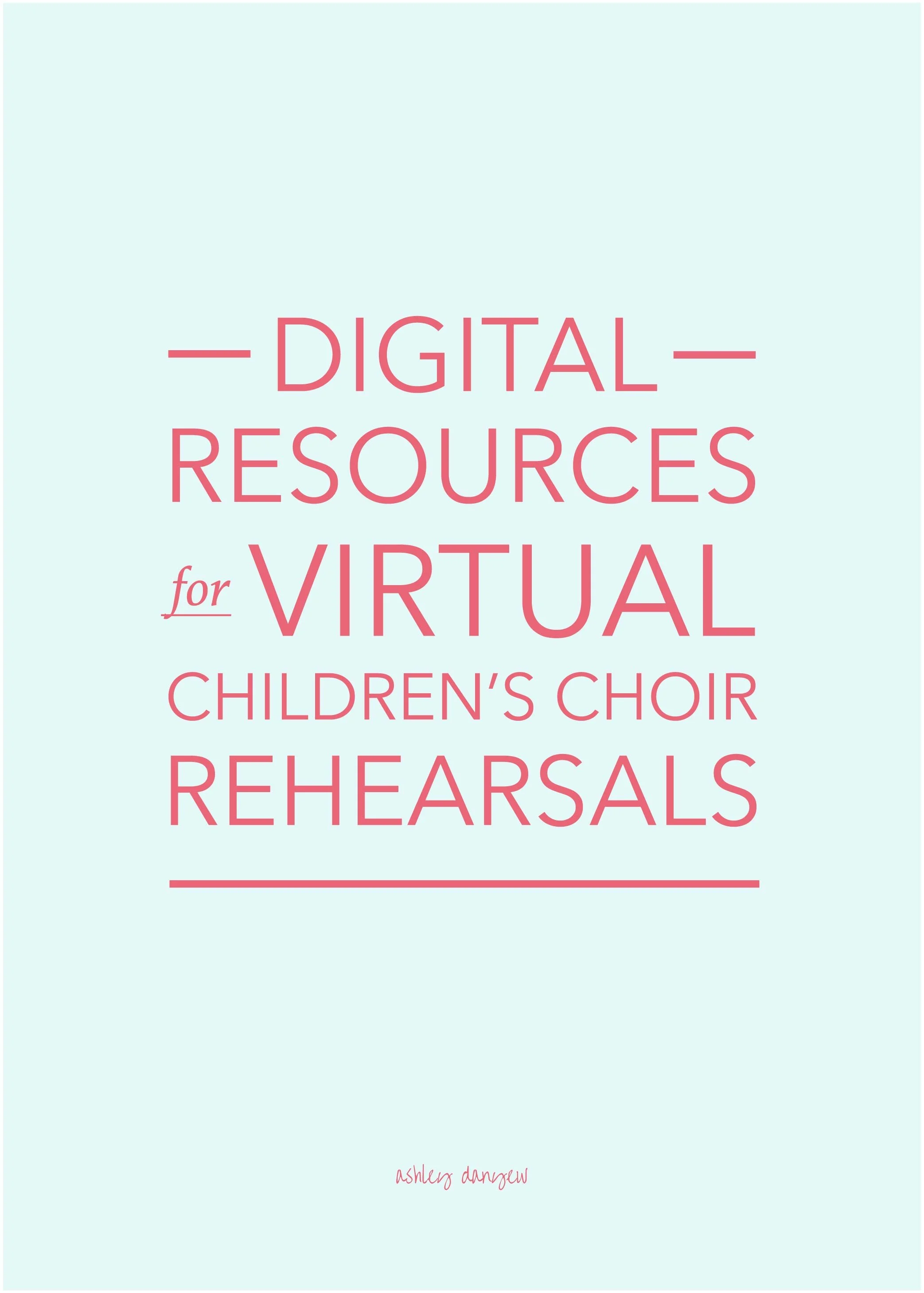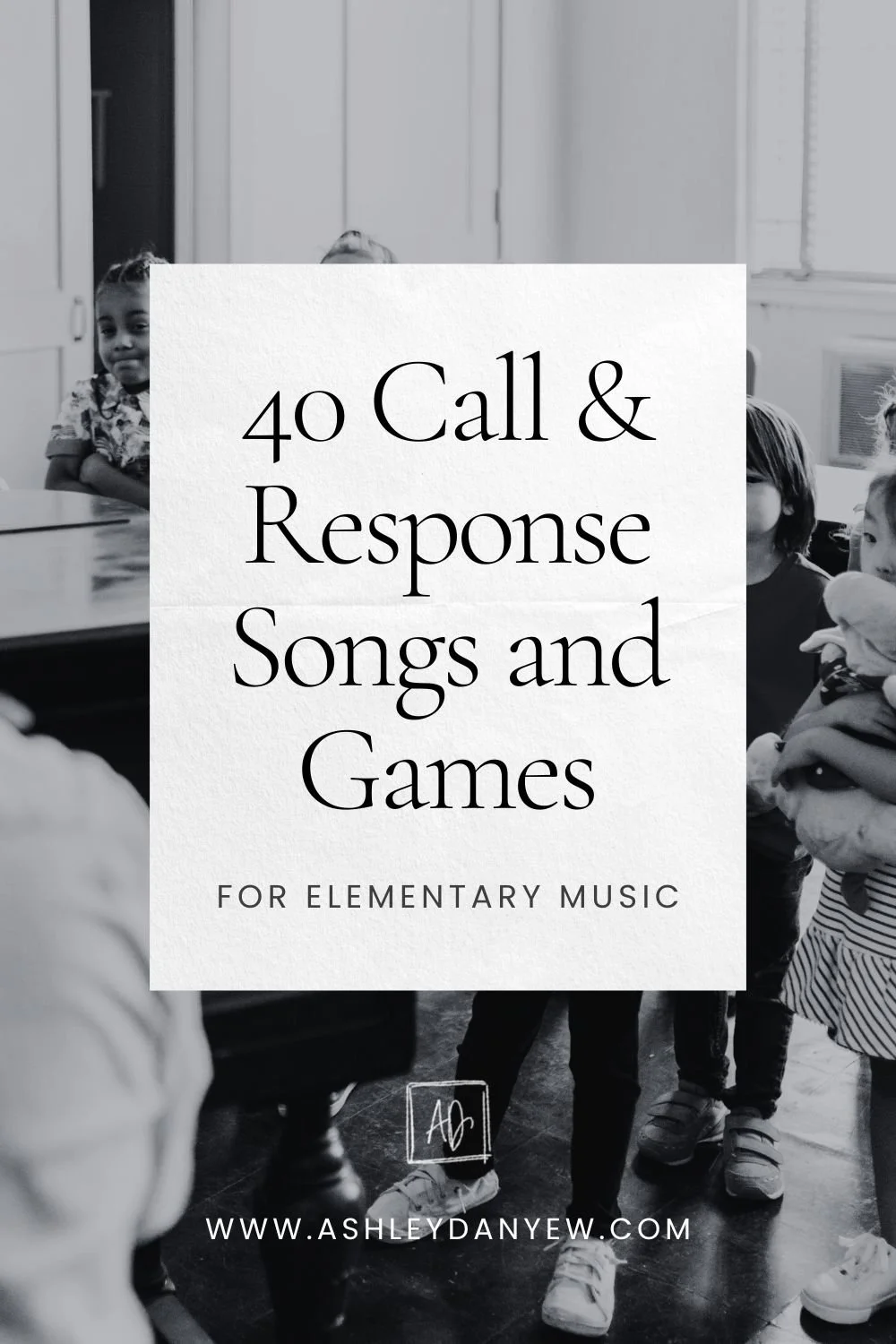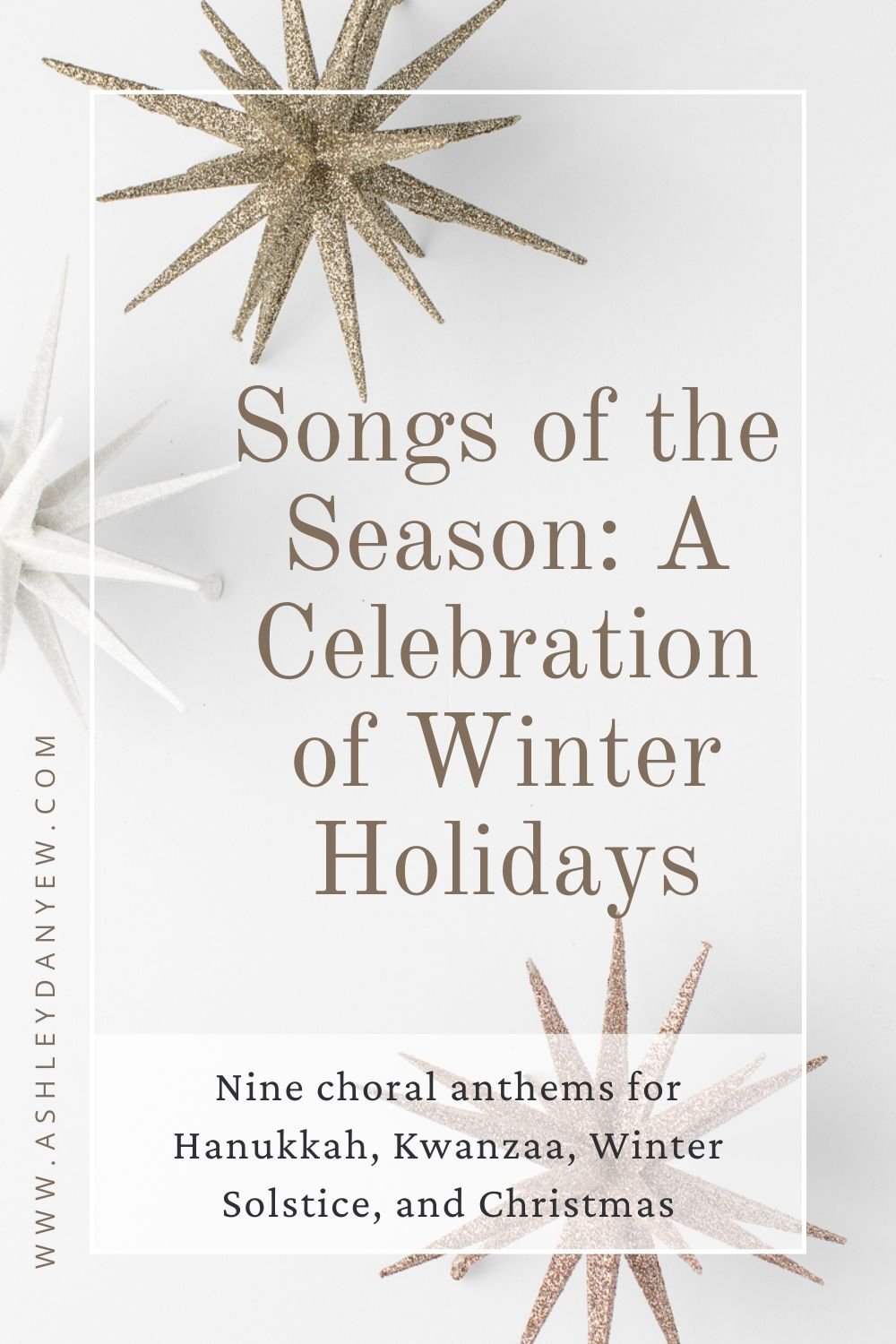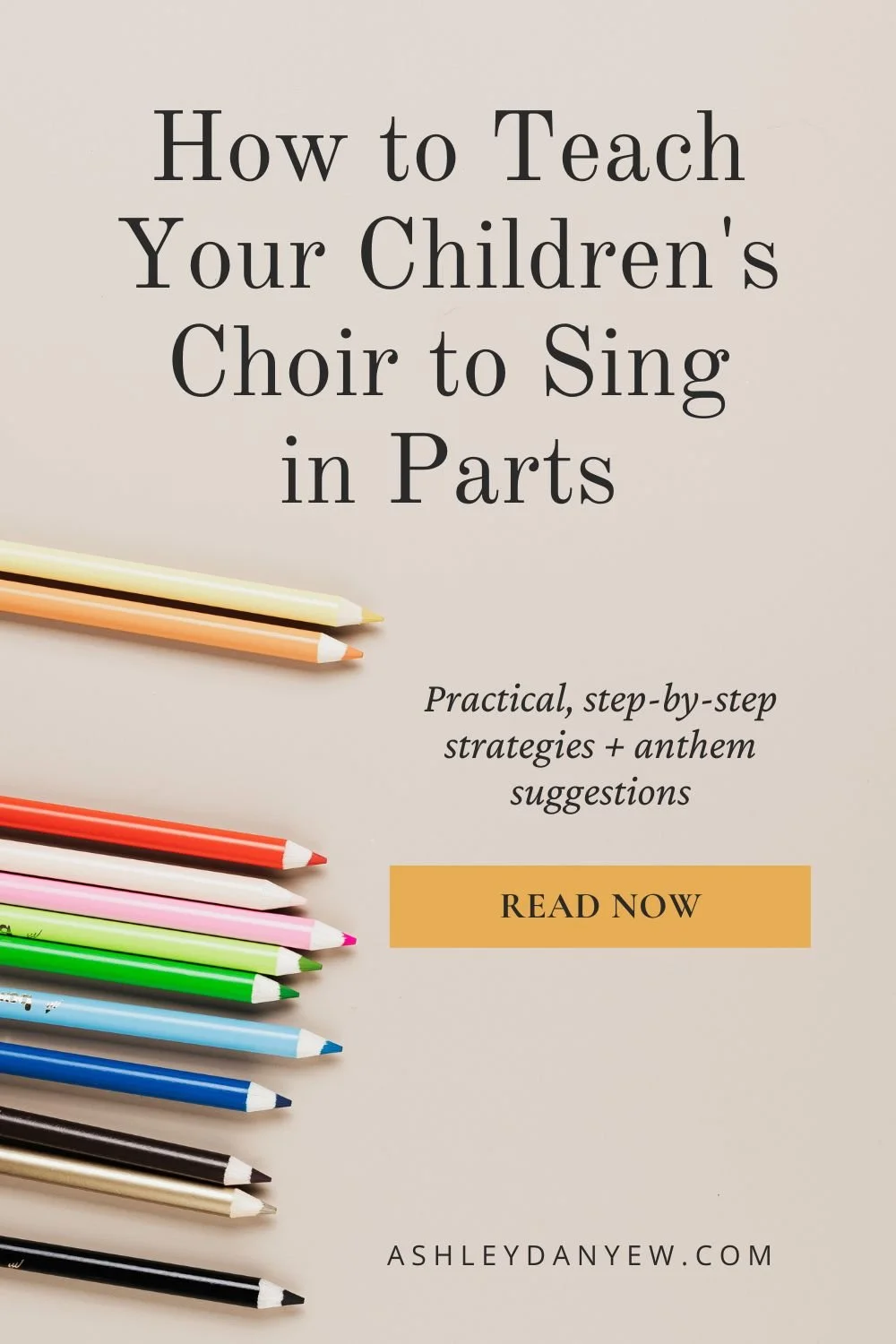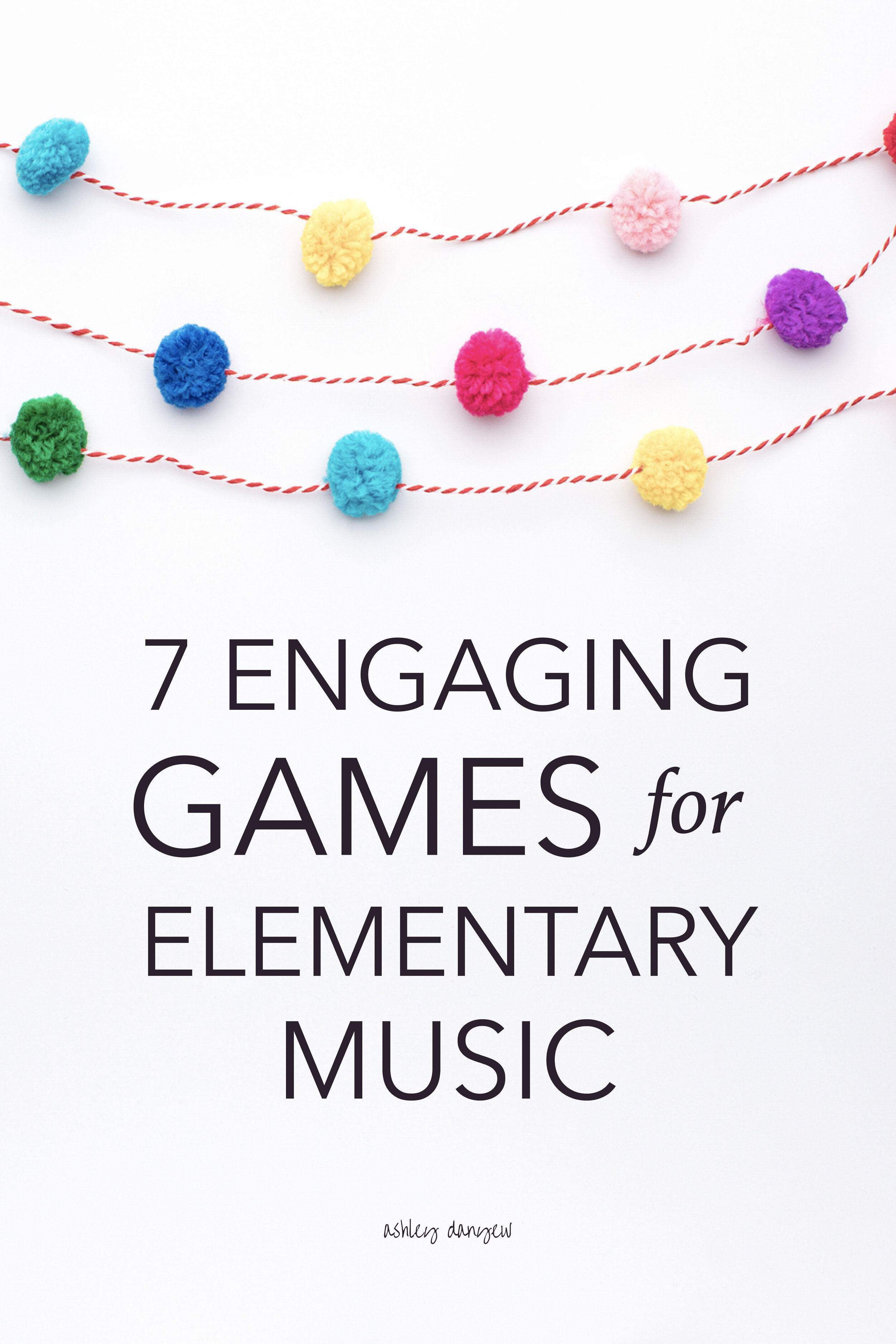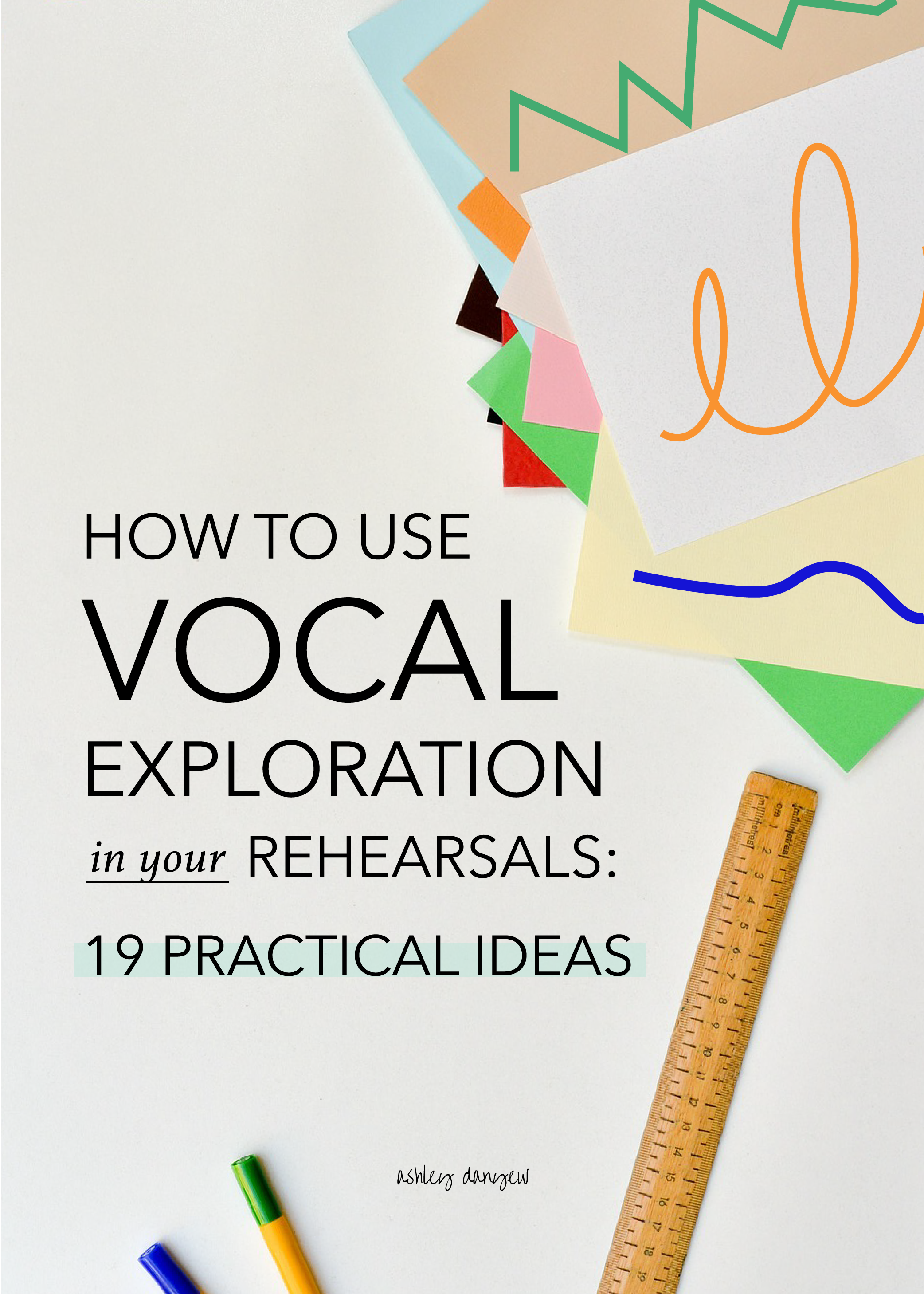This year has brought some unprecedented challenges and the global pandemic has changed the way choirs and musical ensembles gather and make music together.
Many choirs moved to online rehearsals this spring, using Zoom or Facebook Live to stay connected and try to continue making music the best they could. But with the technology we have available to us and unpredictable internet speeds at home, we’ve all learned that it’s really not possible to sing or play together in real-time.
Looking ahead to next year, there are a lot of unknowns and a lot of questions about how choirs may be able to gather, if at all.
Perhaps you’ll be able to come together with a small group each week or rehearse in a larger space where singers can be more spread out. Or perhaps you’ll find yourself digging back into the music-teaching Facebook groups, asking questions and looking for advice, Googling tips for using Zoom for music rehearsals, and creative ways to teach music and singing through distance-learning.
We’ve all learned these past few months that there are just some things that aren’t possible through Zoom, Skype, FlipGrid or any other virtual-learning platform:
What you CAN'T do:
Sing together out loud
Chant rhythm together
Hear everyone’s voices
Make music together in real-time
Sing in harmony together
That being said, all is not lost. There are still lots of things you can do in online choir rehearsals:
What you CAN do:
Sing with the children (you won’t be able to hear them, but they can hear you and sing along with another voice)
Play recordings
Look at a musical score together
Show visuals
Conduct as the children sing
Play listening games
Share musical ideas
Sing, play, or chant one at a time
Sing, play, and chant in call-and-response style
Today, I’m sharing some helpful digital tools and resources that can be used in online choir rehearsals (synchronous or asynchronous) or in-person, if and when you’re able to return to that. You’ll find digital tools, game ideas, teaching strategies, and curriculum resources that were designed especially for distance-learning situations.
I hope this is helpful to you in your ministry and teaching!
Digital Resources for Virtual Children's Choir Rehearsals
Teaching Tools
Use these colorful cards to facilitate vocal exploration in your choir rehearsal as either a warm-up or a change-of-pace activity. Print the cards and hold them up in front of your camera on Zoom or share your screen and display them virtually.
This free printable card set features 16 rhythm patterns cards in 4/4 time. Use them for call-and-response, teaching a new song or anthem, or developing musical awareness and listening skills. Print the cards and hold them up in front of your camera on Zoom or piece them together on a piece of foam board. Looking for more ideas? See these posts: Tried-and-True Rhythm Games for Children's Choir: Part I and Part II
We all know the importance of repetition in learning. The problem is, it often becomes something we do mindlessly. To keep your singers engaged, here are 38 silly, creative ways to sing something again.
This free virtual tool makes it easy to help children experiment with tonal patterns, ostinati, and composition. Have children right down their ideas using a simple worksheet like this and then call on one child at a time to share their composition (with you playing the virtual Boomwhackers for everyone to hear).
Tonal & Rhythm Pattern Card Set (Younger Elementary)
Two sets of printable tonal pattern cards (major and minor, 44 cards each) and two sets of printable rhythm pattern cards (4/4 and 3/4 time, 32 cards each).
Tonal & Rhythm Pattern Card Set (Older Elementary)
Two sets of printable tonal pattern cards (major and minor, 44 cards each) and four sets of printable rhythm pattern cards (4/4 and 3/4 time, 32 cards each).
This free tool makes it easy to share song visuals, rhythm patterns, and ear-training activities for children to do as a group in a virtual rehearsal and on their own (send the link to parents or post in a private Facebook group for families). Here are a few ideas for games and activities:
Make your own step vs. skip game with a few lines and black ovals. First, have children listen and identify if the sound matches the picture on the screen. Then, play an example (two notes) and have children decide if the notes were stepping or skipping. Move the ovals on your screen accordingly and have children sing it back.
Create a This or That game with two tonal or rhythm patterns that are similar, but different. Sing, play, or chant one of the examples and have children vote for what they hear.
Create visuals for musical concepts like loud and soft; high and low; up, down, or repeating; long and short; fast and slow. Play listening games to compare these musical contrasts and have children vote for what they hear.
Curriculum Resources
Keep on Singing (Preschool)
for ages 4-6
This brand-new digital curriculum by Growing in Grace includes 10 scripture-based songs for general use, Thanksgiving, and Christmas, 10 video-based activities, 15 KIDPages with teaching steps, and 15 age-appropriate devotionals. The kit includes scores, student scores, demonstration and accompaniment recordings, and a sing-along video for each song.
Keep on Singing (Elementary)
for children grades 1-6
This brand-new digital curriculum by Growing in Grace includes 7 scripture-based songs for general use, Thanksgiving, and Christmas, 8 video-based activities, 15 KIDPages with teaching steps, and 15 age-appropriate devotionals. The kit includes scores, student scores, demonstration and accompaniment recordings, and a sing-along video for each song.
In the Image — A Music and Arts Faith-Formation Resource
for elementary children’s choirs
This newly-created digital resource by Choristers Guild is inspired by Mark Burrows’ musical, In the Image — about Creation and being created in the image of God. It includes 6 (unison/two-part) songs from the musical, including the demo tracks and reproducible singer's scores.
This kit is intended to replicate a Music & Arts Camp, VBS, or Sunday School curriculum at home. The content is organized into five content modules, which can be used over the course of a week (one module per day) or over the course of a month (one module per week). Each module includes reproducible Bible beats, songs, art experiences, nature devotions, small-group games, and family worship.
How are you preparing for the choir year ahead? What tools and resources are you finding most helpful during this time of virtual rehearsals and distance learning?


